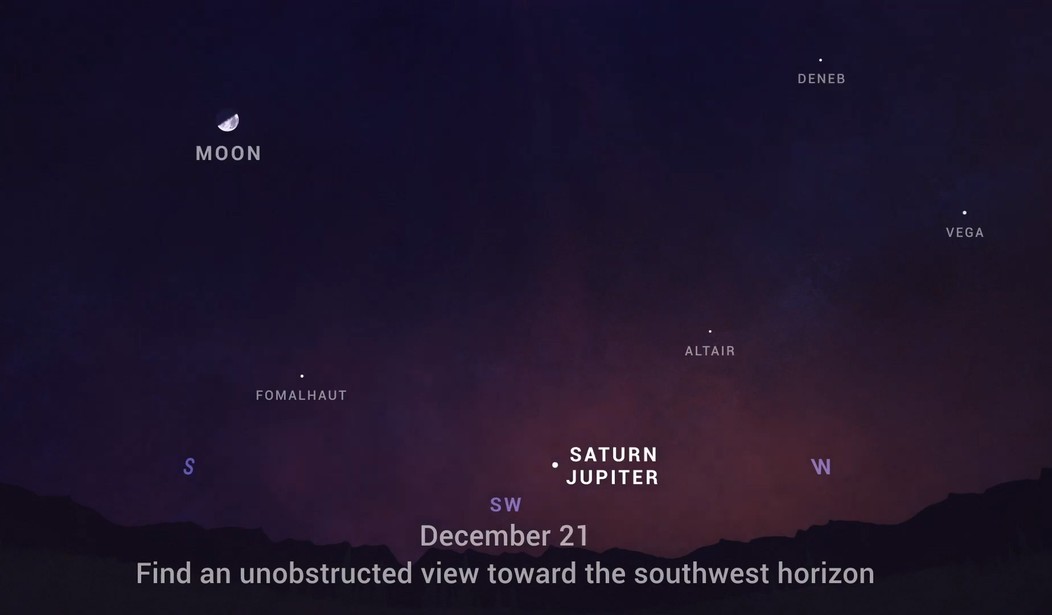On Monday night, if you look toward the southwest horizon you’ll see a rare celestial event. Our two largest planets, Saturn and Jupiter, will align, creating what some refer to as “The Christmas Star.”
The conjunction of the two planets hadn’t happened since 1623. That year, the event could only be seen further south and across Africa. The last time the people of Europe and North America glimpsed the phenomenon was 1226.
In truth, this alignment is not considered “The Star of Bethlehem” that the Bible says appeared in the sky around Christ’s birth. According to Rick Larson, who has extensively researched the Bethlehem star, that was an entirely different alignment.
“What’s happening on Dec. 21st, as beautiful as it is, is not the star of Bethlehem,” Larson tells CBN News.
Larson has done a lot of research on this topic, tracing the actual celestial movements of the planets and stars back to the time of Christ. “The Star of Bethlehem is a conjunction of Jupiter and Venus,” he explains. “The conjunction, which means a coming together, was so close that they basically stacked like a figure 8 and they didn’t obscure one another’s brightness and the result was the brightest star that anyone alive had ever seen.”
Some scientists disagree, but tomorrow night’s conjunction will be impressive enough.
What makes this year’s spectacle so rare, then? It’s been nearly 400 years since the planets passed this close to each other in the sky, and nearly 800 years since the alignment of Saturn and Jupiter occurred at night, as it will for 2020, allowing nearly everyone around the world to witness this “great conjunction.”
The closest alignment will appear just a tenth of a degree apart and last for a few days. On the 21st, they will appear so close that a pinkie finger at arm’s length will easily cover both planets in the sky. The planets will be easy to see with the unaided eye by looking toward the southwest just after sunset.
The two planets will only appear to be that close. They will actually be hundreds of millions of miles apart, but both planets, with their thick atmospheres, reflect sunlight extraordinarily well, so despite being billions of miles from earth, they shine brightly.
If you’d like to take a look yourself, NASA suggests the following.
- Find a spot with an unobstructed view of the sky, such as a field or park. Jupiter and Saturn are bright, so they can be seen even from most cities.
- An hour after sunset, look to the southwestern sky. Jupiter will look like a bright star and be easily visible. Saturn will be slightly fainter and will appear slightly above and to the left of Jupiter until December 21, when Jupiter will overtake it and they will reverse positions in the sky.
- The planets can be seen with the unaided eye, but if you have binoculars or a small telescope, you may be able to see Jupiter’s four large moons orbiting the giant planet.










Join the conversation as a VIP Member